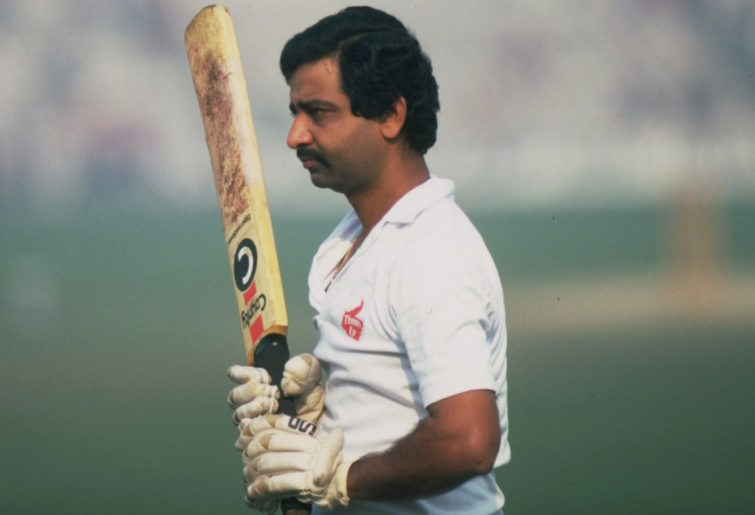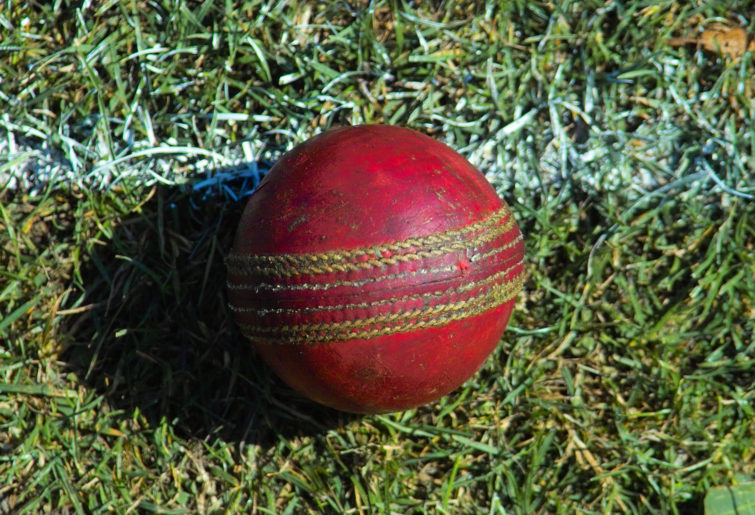Scoring a ton always gives a batsman great pleasure.
If that century contributes significantly in the outcome of the match, then the batsman gets double delight.
However, there have been cases where a batsman didn’t reach a hundred, but still his contribution remained significant.
In this two-part article, I will be looking at ten such effects from the 1970s and 1980s. I have arranged my list in chronological order.
Gundappa Viswanath – 97* against the West Indies in Madras, 1975
Both the teams were using this series to rebuild their team. The West Indies were building in the post Garfield Sobers and Rohan Kanhai era, while India were trying to bounce back after a bad 3-0 defeat in England the previous summer. The task for the home side became more difficult as their best batsman Sunil Gavaskar missed most of the series due to a finger injury.
The West Indies won the first two Tests easily, but the Indian spinners led them to a victory in the third Test in Calcutta. So the Indian supporters came to the ground on the opening day full of expectations. Midway through the day’s play they looked shocked and disheartened.
The Indian top order looked hapless against a young speedster named Andy Roberts. Generating unbelievable pace from the slow pitch, he was just too quick and too straight for all the Indian batsmen except one.
The exception was Gundappa Viswanath, the best batsman of the team. Fresh from a match-winning hundred at the Eden Gardens, he seemed the only one who had the technique to handle the Antiguan quickie. Still, despite his effort, India slumped to 6-76. While Rajkot-born Karsan Ghavri was quite capable with the bat, the three spinners following him in the order were renowned for their inability with the bat.
Everything hinged on Viswanath and he took the responsibility in the most glorious manner. First he shared a 41-run stand with Ghavri before Roberts bowled the left-hander. Roberts dismissed EAS Prasanna for a duck, but Bishan Bedi gave Viswanath some valuable company – 52 runs came for the ninth wicket before veteran Lance Gibbs bowled Bedi.
By this time, the effort of Viswanath had given both his team and the crowd grounds for hope. Even BS Chandrasekhar, a rabbit with the bat, rose to the occasion and stayed with Viswanath for 38 minutes. By this time Viswanath had come close to memorable hundred.
But then Roberts picked his seventh victim, skipper Clive Lloyd caught Chandrasekhar for one run, leaving Viswanath unbeaten on 97. India finished 190 all out, which was a superb recovery led by the little man from Karnataka. Ashok Mankad, the son of Vinoo, was the second highest scorer with 19. The extras contributed 16.
Andy Roberts finished with 7-64, which was a remarkable feat on the slow wicket. He picked up five more wickets in the second innings. In fact, his 12-121 here were the best match figures of his Test career. But Viswanath’s brilliance resurrected the whole Indian team, and off-spinner Prasanna with nine wickets took India to a victory. The West Indies won the deciding game to take the series 3-2.
Viswanath’s 97 not out has become a permanent feature of India’s cricketing folklore.

(Credit: Adrian Murrell/Allsport)
Ross Edwards – 99 against England at Lord’s, 1975
Following the innings defeat in the first Test, England changed their captain. Tony Greig took over and England gave debuts to David Steele and Bob Woolmer to bolster the middle-order batting.
Indeed, for the first day and a half it looked like that the home side were heading for a victory. On the first morning, Dennis Lillee ran through the top order, leaving England at 4-49. But new captain Greig (96) and debutant Steele (50) took the score to 315.
Then John Snow, the old foe, destroyed the Australian top order. He dismissed the Chappell brothers cheaply and when he bowled Max Walker, Australia were struggling at 7-81. A follow-on looked a genuine possibility.
But the Aussies started their recovery with Edwards in the forefront. First, along with Jeff Thomson (17), he avoided the follow-on.
Then he shared a highly entertaining 66-run stand with Denis Lillee. But then with his team on 8-199 and his own score on 99, he became the first Test victim of the part-time bowler Woolmer. He just missed getting his name on the Lord’s honour board.
Australia eventually reached 268 thanks to some aggressive batting by Lillee (73*) and they saved the match with some strong top-order batting on the final day.
Edwards had made his Test debut at Lord’s three years earlier, but on that occasion it was his fellow debutant Bob Massie who stole the show. This perhaps formed the trend of Edwards’ career. Despite averaging a highly respectable 40 with the bat over 20 Tests, he mostly lived in the shadows of the Chappells and Doug Walters.
Rick McCosker – 95* against England at Headingley, 1975
The draw at Lord’s meant that Australia went in to this third Test 1-0 ahead. However, when England set Australia a target of 445 in the fourth innings, it looked like that they would easily win the Test. There were five sessions of play left and Australia had scored only 135 in the first innings.
Strangely, Australia used Rod Marsh as an opener in this Test. Accompanying him was McCosker, still in his first year in Test cricket.
There was enormous pressure on the opening pair. Marsh looked especially shaky and most of the runs came from the other end. There was extra pressure on McCosker as well after his duck in the first innings. But he responded to the situation superbly.
It was a rare case of England playing two left-arm spinners together in a Test, Phil Edmonds and Derek Underwood. In the first innings Edmonds had put his more famous teammate in the shadows, taking 5-28. But on the fourth day, England’s spinners were steady but failed to show enough penetration. McCosker looked unperturbed as he finished the day 95 not out, Doug Walters was 25 not out, with Australia on 3-220.
The match was delicately poised with all four results looking possible. A draw perhaps was the least likely one, but sadly there was no play on the final day. For once, it wasn’t the British weather. The weather was fine but some vandals had damaged the pitch overnight and play wasn’t possible.
Thus the crowd was denied a fine last day’s play. McCosker was denied what would have been his first Test hundred, and Walters perhaps missed a chance to show his best to the English crowd.
McCosker, however, scored his first Test century in the very next Test at the Oval as Australia won the series 1-0.

(Wiki Creative Commons, CC BY-SA 3.0)
Mohinder Amarnath – 60 versus the West Indies in Kingston, 1976
India were all out for 97 in their second innings of this so-called Bodyline Test. Sixty of those 97 runs came from Amarnath, who attempted a brilliant counter attack.
Amid relentless short-pitched bowling targeting the batsmen’s bodies, he bravely took on Michael Holding, Vanburn Holder and Wayne Daniel. His innings included seven fours and three sixes before he fell to the left-arm medium pace of Bernard Julien.
In his next visit to the West Indies in 1983, Amarnath scored heavily against the best bowling attack in the world.
Eddie Hemmings – 95 against Australia at the SCG, 1983
I had a plan to include an innings from the tail-enders in my list. This is the one, although it came as a nightwatchman.
England needed to win this Test to keep the Ashes, but when they were set a target of 460 very late on the fourth day, it became impossible. The Aussie attack was missing Lillee but still it was formidable enough.
In the end the English team did well to save the match by scoring 7-314 with Hemmings making a significant contribution.
England started the final day on one wicket down for eight runs with Chris Tavare and nightwatchman Hemmings at the wicket. In a situation where the touring team were trying to play out the time, many expected Tavare to be the main obstacle for Australia.
But the West Australian spinner Bruce Yardley trapped him LBW early in the day. A number of England middle-order batsmen got going but then got out at vital times. After Hemmings’ 95, the next highest score was 44 by Derek Randall.
Hemmings was the fifth man out, caught behind off the bowling of Yardley. Hemmings, basically an off-spinner, missed a well-deserved ton by just five runs.






























































































